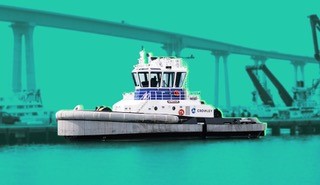The Indian government’s ambitious plan to transition from conventional fuel-powered harbor tugs to greener, cleaner alternatives has met resistance from private operators. Under the Green Tug Transition Programme (GTTP), the Ministry of Ports, Shipping, and Waterways (MoPSW) aims to replace diesel-based tugs with zero-emission models at state-owned ports. However, concerns over high costs, long payback periods, and the uncertain lifespan of emerging electric technologies have sparked skepticism among industry players.
“There is no economic justification for green tugs,” a port operator commented. “The payback period is too long, and apart from environmental benefits, we fail to see any significant advantage in switching to these alternatives.”
Despite the reservations, the government remains committed to its environmental goals. Harbor tugs play a critical role in port operations, assisting in berthing, unberthing, and ship maneuvering. The GTTP sets a phased timeline ending in 2047, by which all 12 state-owned major ports are required to fully transition their tug fleets to greener alternatives.
The first phase of the program, running until December 2027, focuses on four major ports: Jawaharlal Nehru Port Authority, Deendayal Port Authority, Paradip Port Authority, and V O Chidambaranar Port Authority. These ports are expected to procure or charter at least two battery-electric-powered tugs each, guided by standardized designs and specifications issued by the Standing Specification Committee (SSC). The total investment for this phase is estimated at Rs 1,000 crore, but orders for these green tugs are yet to be finalized.
This gradual shift to sustainable harbor tugs is part of India’s larger commitment to reducing emissions and greening port operations. However, as private operators voice concerns over financial viability, the government faces the challenge of balancing environmental aspirations with economic realities.
Phased Transition Plan
The initial phase will introduce battery-electric tugs, with future provisions for adopting emerging green technologies such as hybrids, methanol, and green hydrogen as they become viable. By 2030, 50% of tugs at the four major ports—Jawaharlal Nehru Port, Deendayal Port, Paradip Port, and V O Chidambaranar Port—must be GTTP-compliant.
Meanwhile, other state-owned ports must ensure at least 25% compliance during this phase, potentially incorporating alternative fuels like methanol and hydrogen alongside battery propulsion.
From 2030 to 2035, all ports must have at least 50% GTTP-compliant fleets, increasing to 75% by 2040. By the final phase, ending in 2047, 100% of tug fleets in the 12 major ports must operate on green technologies.
Skepticism from Stakeholders
Despite the government’s environmental commitment, industry stakeholders have raised concerns about the practicality and financial feasibility of the transition. A tug operator voiced doubts about the long-term economic sense of adopting electric tugs, citing higher costs, a lengthy payback period exceeding 15 years, and the evolving nature of green technologies.
“The prices for electric tugs are currently double that of conventional ones. The payback period is too long, and with emerging technologies like green hydrogen, ammonia, and methanol potentially disrupting the market in five years, the investment in electric tugs feels risky,” the operator explained.
Additionally, electric tugs are perceived as less reliable for shipping operations. “Conventional tugs ensure smooth ship movements daily, but if electric tugs underperform, it could disrupt port operations and trade,” the operator added.
Technical and Operational Concerns
The industry has also raised concerns about the durability of electric tugs. While conventional tugs have a lifespan of 30 years, electric tugs require costly battery replacements every 10 years. Keeping the battery compartments at specific temperatures adds further complexity.
“There is insufficient data on battery technology’s long-term reliability. Even electric cars haven’t completed a decade on the road,” said another expert, adding that the shift might be premature.
The Role of Emerging Technologies
While battery-electric tugs are seen as a feasible short-term solution for harbor duties, technologies like green hydrogen and methanol-powered tugs remain in developmental stages. Methanol and hydrogen tugs are expected to be even more expensive, with hydrogen storage posing significant logistical challenges.
“Battery technology is currently the most accessible option for the next 5–10 years, especially for short-term operations like harbor duties,” noted an industry expert.
Pressure on Ports
Despite these challenges, some ports are moving ahead with tenders to procure green tugs, even as the government has yet to finalize a standardized tender model. For instance, Deendayal Port Authority has issued a tender for an electric tug, but industry players criticized it as lacking comprehensive evaluation criteria. “The government needs to ensure that every stakeholder—shipyards, contractors, and port operators—has a vested interest in making this transition successful. Without shared accountability, this initiative could backfire,” warned a port operator.











